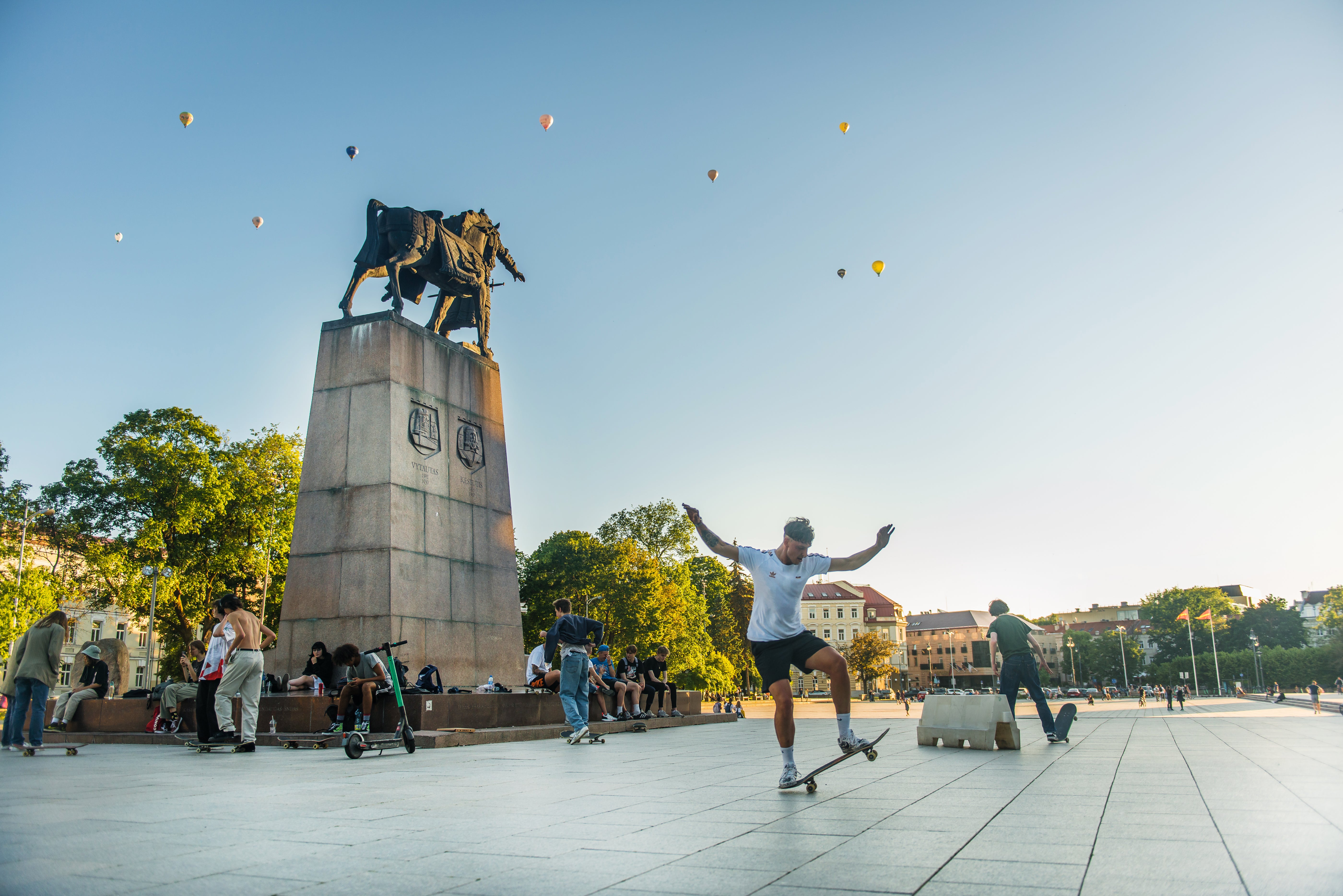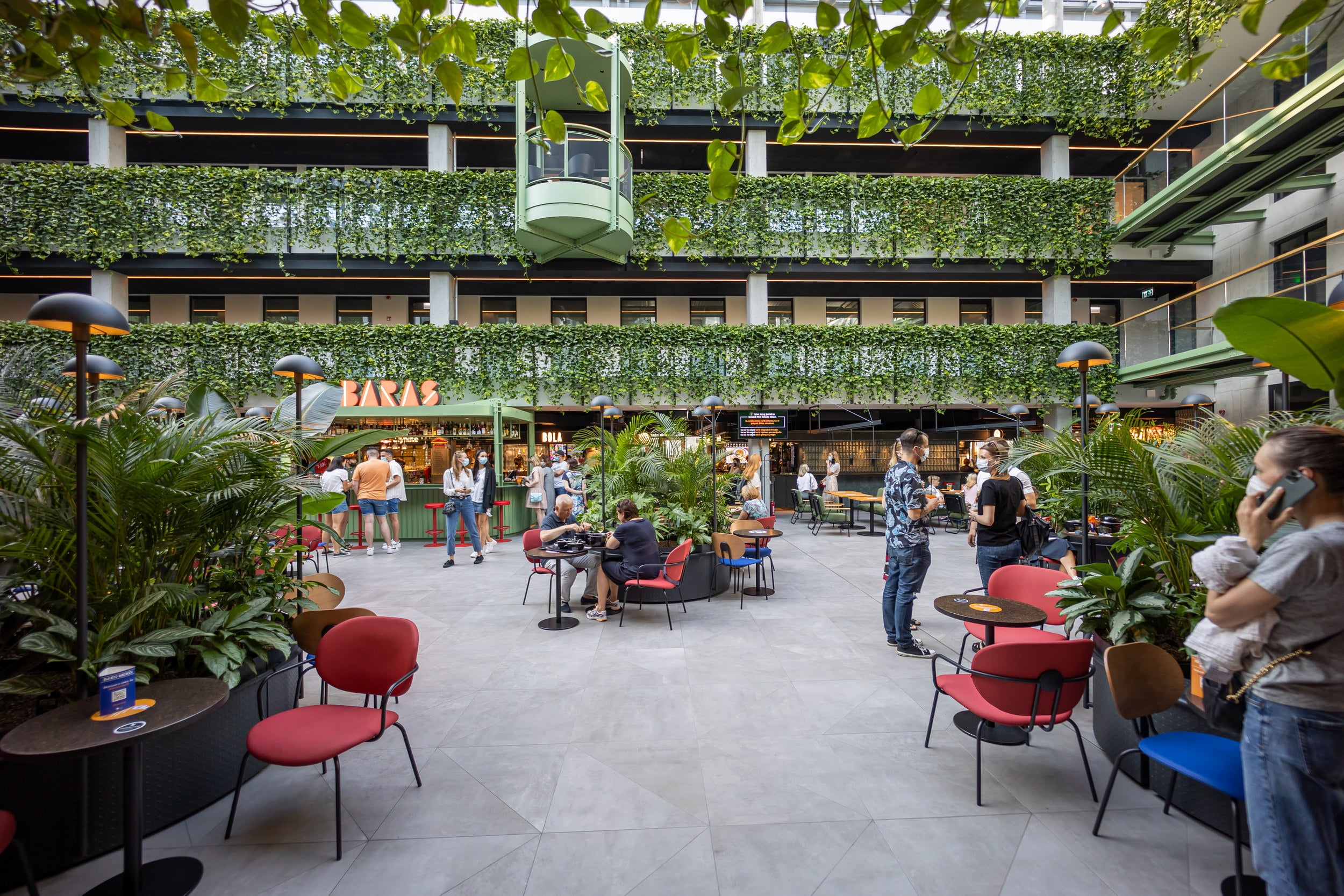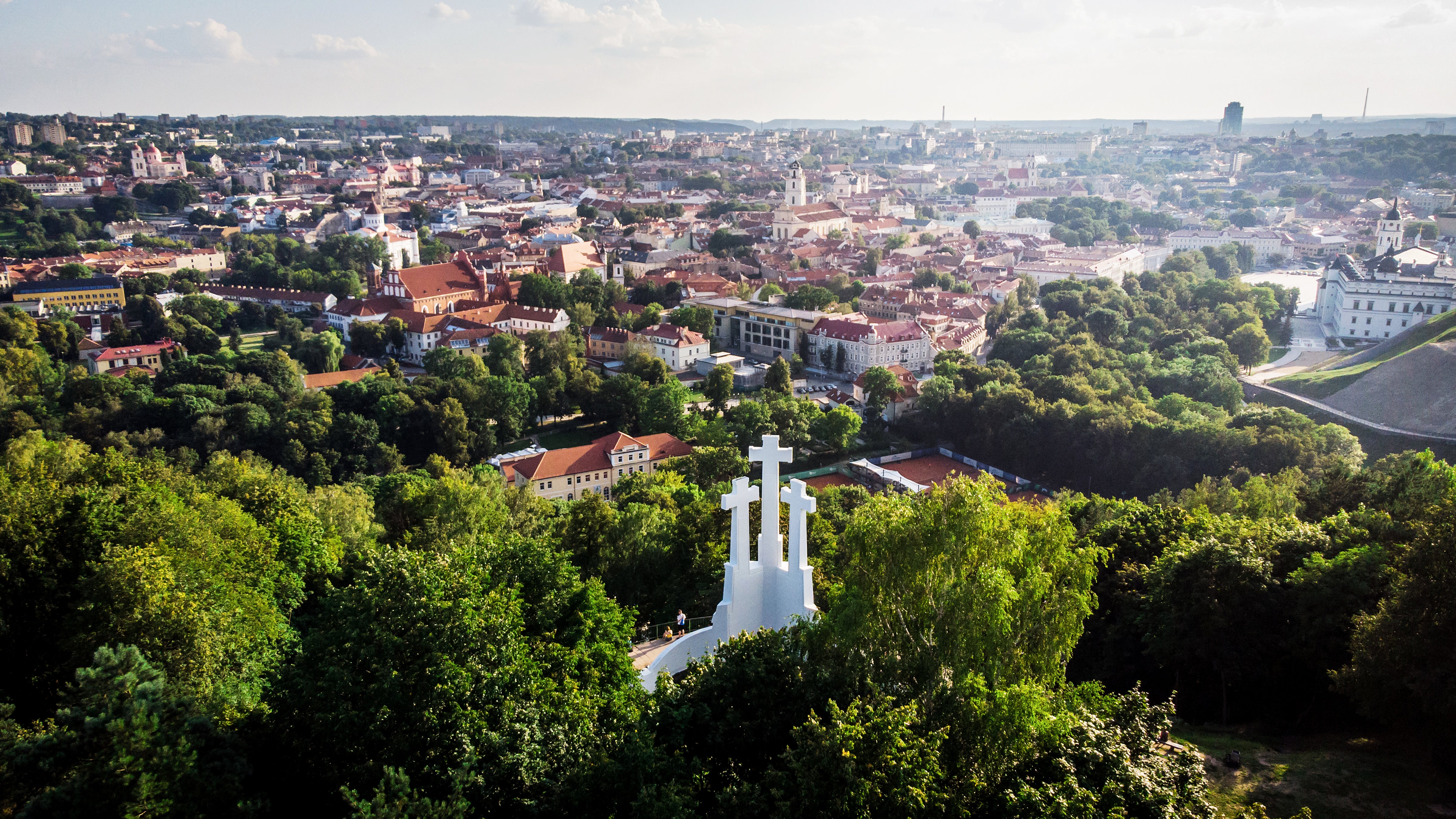
Lithuania’s cute capital has the feel of a supersized village. Venture beyond the fortresses and weathered chunks of city wall and you’ll find plenty of reminders of its tumultuous past, whether it’s the Soviet-era architecture or the numerous historic sites – many of which have only opened up to the public in recent years, and which provide a fascinating insight into its darker periods.
As well as a charming old town of convivial taverns and indie shops, there’s hearty Lithuanian cuisine to be found and plenty of quirky sights (art in an ex-prison, a village-sized “republic”). You might even spot a familiar backdrop from the TV show Chernobyl parts of which were filmed here. There’s never been a better time to go, either – in 2023, Vilnius celebrates its 700th anniversary, but the celebrations kick off early in 2022.
What to do
Drop by Cathedral Square
For some self-guided exploration, kick things off in Katedros Aikštė (Cathedral Square), where you’ll find the Basilica of St. Stanislaus and St. Ladislaus – a former Pagan temple and the burial site of Lithuania’s patron saint, Casimir. Feeling lucky? Set into the ground near Vilnius Cathedral is the so-called Stebuklas (“miracle” in English) tile. It marks the end point of a human chain formed on 23 August 1989, when two million people across Estonia, Latvia and Lithuania joined hands to form the Baltic Way – the longest unbroken human chain in history – as an act of protest at Soviet occupation. Legend has it that if you stand on the tile, spin around three times clockwise, jump up and clap once, your wishes will come true.
Learn about the Soviet era
The Museum of Occupations and Freedom Fights – commonly referred to as the “KGB museum”, due to the fact it’s in the Soviet secret police’s former HQ – is a harrowing but essential glimpse into the bleaker parts of the city’s history. It was also used as a setting for recent hit television series Chernobyl, most of which was filmed here. Head upstairs to check out exhibitions relating to the anti-Soviet partisans, who planned their resistance efforts while living in the forests surrounding the city, before heading downstairs to the cells where the KGB interrogated those who rebelled against Soviet rule. The cells you’ll see include a terrifying padded one used for interrogation, and several contain grisly apparatus such as straitjackets and tiny platforms on which prisoners were forced to stand. The darkest spot is the execution room, where thousands of prisoners were shot.

Spend the day in jail
Lukiškės Prison, which was used as a setting for Stranger Things, opened in 1904 and closed in 2019. It housed a wide range of inmates, including those imprisoned during both world wars, the Soviet invasion and after Lithuania’s independence. It was opened to the public in 2021 and you can now take guided tours around incredibly well-preserved passages – you’ll see hiding holes used by inmates, the graffiti they scrawled and some of the items they made away from prying eyes, including a homemade gun. The central courtyard is now used as a performance space, and you can enjoy a cocktail in a “cellblock bar”. There’s a packed calendar of art exhibitions too, courtesy of the artists who now rent out former cells as studio spaces.
Check out Užupis
Close to the city centre, Užupis is a bohemian riverside neighbourhood which declared itself a republic in 1997. It’s home to artists, writers and musicians, with an ethos that’s summed up in a constitution you can read on Paupio Street – the key principles have been translated into dozens of languages and engraved onto metal plaques. You’ll find a handful of cafés and craft shops here, but the main draw is the neighbourhood’s general quirkiness. Swing by the Užupis Border Control building for starters – it’s an information point and souvenir shop, and you can even have your passport graced by an Užupis Republic stamp.
Where to stay
Vilnius has some gorgeous boutique hotels, including the beautiful (but pricey) Hotel Pacai, set in a Baroque palace in the old town, and with a spa, hammam and glossy marble interiors. Doubles from £167, B&B. hotelpacai.com
The Hilton Garden Inn is a funky crash pad with a beautiful rooftop terrace and a slick interior. The design firm behind it has given various nods to the country’s past, including a fireplace shaped like a Pagan altar (Lithuania was the last Pagan nation in Europe, finally accepting Catholicism in the 14th century). Doubles from £70, B&B. hilton.com

Where to eat
For traditional Lithuanian cuisine, it’s got to be the old town. Surprisingly, it rarely gets crowded, and there are some fantastic restaurants here. You’ll find Restaurant Lokys tucked into a medieval merchant’s house, specialising in so-called “hunters’ dishes” – think venison roasts, wild boar and beaver meat stew.
Eating on a budget? Vilnius is famous for its canteens – cheap and cheerful restaurants serving the same dishes they served during the Soviet era. Try Žilvino Restoranas, where a bowl of delicious borscht (a beetroot soup popular in Eastern Europe) will set you back €1.20 (£1).
For stylish surrounds, try Paupys Market – an airy, fern-filled food hall where you’ll find everything from Japanese delicacies to dishes from Lithuania’s neighbours. The Georgian bites at Chačapuri Bistro are highly recommended – order the Georgian cheese bread garnished with an egg yolk.
Where to drink
Old town hangout Nick and Nora is a tiny cocktail bar famous for its use of local ingredients. Try the Quince Negroni, made with Lithuanian quince, or the Penicillin Highball, which uses the sweetness of Lithuanian honey to offset the heaviness of a smoked bacon schnapps. Pub-lined Vilnius Street, in the city centre, is the main nightlife drag – expect to pay around €3.50 (£2.90) a pint.
Where to shop
The huge G9 shopping centre on Gediminas Avenue is where you’ll find high street brands such as H&M, but our favourite retail therapy spot is the old town, which has several fantastic boutiques. Terra Recognita has beautiful jewellery and sculptures made by Lithuanian artist Saulius Vaitiekūnas. Many of his pieces incorporate stones fished out of the Baltic sea.
Baltic amber, formed from pine resin which has spent millions of years at sea being washed ashore, is known as “Lithuanian gold” here, and you’ll see it everywhere – usually incorporated into beautiful pieces of jewellery. For the best quality stuff, head to Gintraka (Aušros Vartų 13).

Nuts and bolts
What currency do I need?
Euros.
What language do they speak?
Lithuanian, although English is widely spoken.
Should I tip?
Around 10 per cent is standard.
What’s the time difference?
Vilnius is two hours ahead of the UK.
How should I get around?
Vilnius is an incredibly walkable city, but there are trams and buses to hop on, too. Vilniečio kortelė is Vilnius’s version of the Oyster card. A new Vilniečio kortelė will cost €1.50, and you can then load it up for certain time periods, which range from 30-minute tickets (€0.65/50p) to 10-day ones (€15/£13).
What’s the best view?
Summit the Hill of Three Crosses and you’ll be rewarded with views of the old town, the 15th-century Bernardine Garden and the city’s serpentine river. The hill’s three crosses were erected in honour of Franciscan friars who died as martyrs in the 14th century when pagans tied them to crosses and threw them down the hill.
Insider tip?
Vilnius University is an explosion of Renaissance, Gothic and Baroque architecture, but don‘t just admire it from the perimeter. At the end of a corridor in the university‘s Lithuanian Philology Centre is a frescoed hall painted by famous Lithuanian artist Petras Repšys in 1986. The Dali-esque Seasons fresco covers the walls and ceilings of several interconnected rooms and depicts scenes from Lithuanian mythology. It’s well signposted, and admission costs €2.
Getting there
Trying to fly less?
It’s lengthy - but not impossible - to get from the UK to Vilnius without flying. Take the Eurostar to Brussels before getting as far as Berlin on an ICE train (via Cologne). From Berlin, take an Ec train to Warsaw - from here you’ll have to take a six and a half hour bus to Kaunas in central Lithuania, before taking a final train east to Vilnius.
Fine with flying?
There are direct flights to Vilnius from London Luton or City airport with Polish airline Lot.







